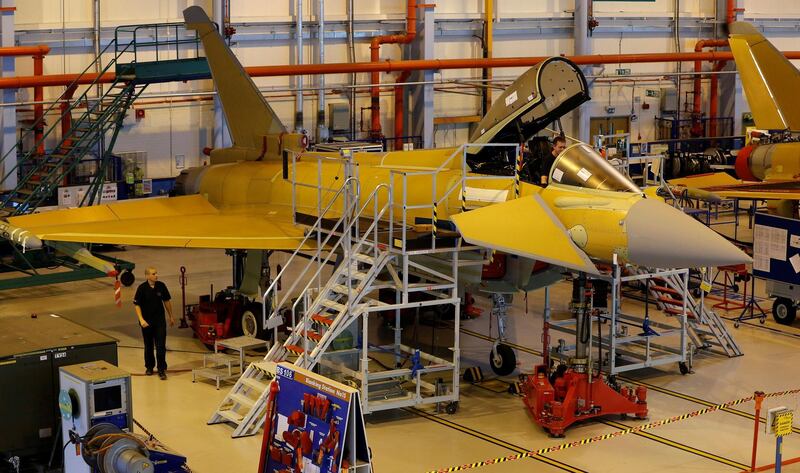Britain is one of only three Nato countries that meets the alliance's 2 per cent of GDP threshold on defence spending. Yet despite attaining this symbolic point of pride, the country’s military capability has shrunk by one-third since 2010, according to Lord West, a former top admiral in the British navy and one-time security minister.
The two statistics best explain the doldrums affecting the country’s defence suppliers. Short sellers have honed in on the sector. Share price collapses regularly feature in the business pages devoted to City of London trading.
Aerospace firm Cobham is currently in the cross-hairs. Having recovered confidence from investor doubts a year ago, it was blindsided by selling last week.
The sale of two antennae businesses raising £455 million (Dh2.35 billion) was greeted as a long-run blow to earnings per share, knocking as much as 8 per cent a year from its recurring sales. Despite the assurances of management that the firm would regain core focus, the market worried about its overall financial strength.
“Defence is in trouble because big-ticket items such as aircraft carriers and a replacement for Trident [nuclear missile system] are draining money away from armed forces’ numbers. Ministers and defence chiefs are now publicly lobbying for additional cash,” said Tony Travers, a director of the London School of Economics, in his annual public sector review.
The giant British arms firm BAE Systems (formerly British Aerospace) has undoubtedly benefited from those big-ticket procurement projects as well as buoyant overseas orders in the wake of sterling’s collapse since the Brexit vote in 2016. Its outlook is, however, dogged by concerns that ultimately Britain will fall out of the close network of European defence contractors.
Its smaller rivals have even bigger problems. GKN, which makes more than half its sales from defence and aerospace manufacturing, has been targeted by a hostile takeover bid from Melrose, a turnaround investment firm.
_______________
Read more:
UK faces battle to keep fighter-jet top slot
£1bn UK warship breaks down during Gulf mission
_______________
The management of GKN claims the bid significantly undervalues its business. The argument has won some sympathy from investors.
Stockbroker Jefferies International has been scathing about the £7.4bn Melrose bid despite it representing a 30 per cent premium on the share price prior to the takeover announcement. Shareholders tempted to cash in were liable to be guilty of short-termism in a complex sector with a long-term investment cycle, it said in a client note. “We believe five years is not long in aerospace and not long enough to capture maximum value for GKN aerospace,” it said.
The difficulty of valuing defence businesses can be a running theme. Electronic systems supplier Laird PLC has also struggled despite some analysts valuing the business at twice its current trading price. It remains stuck at the bottom of its target range despite a succession of broker upgrades.
One firm with prospects looking brighter than before is Chemring Group, which more than doubled its dividend when it announced 15 per cent revenue growth in its annual results last month. The weapons supplier went through a cash-call more than a year ago amid a restructuring exercise. Now analysts are upbeat about its outlook, not least because the US President Donald Trump has signalled a huge military build-up.
“In long-term context, Chemring's markets are declared 'emerging from a long period of decline' and US markets look promising after the Senate last September passed a defence bill that backed President Trump's call for a steep increase in military spending - the US constitutes about half of Chemring's revenues, followed by the Middle East, the UK, Asia Pacific and Continental Europe,” said Edmond Jackson of Interactive Investor.
“It's a cynical view, but apart from the UK and Europe perhaps, some three quarters of Chemring's geographic areas look to offer robust if sometimes lumpy prospects.”





